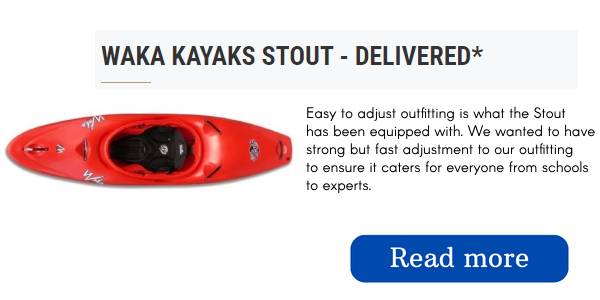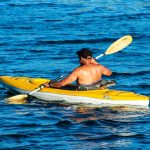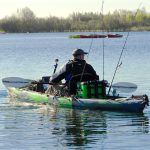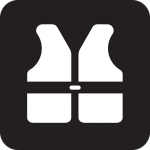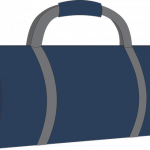Looking for the best kayak bilge pumps to keep your kayak dry and prevent it from sinking? Look no further!
In this article, we’ll review the top 5 kayak bilge pumps on the market that are designed to quickly and efficiently remove water from your kayak.
These pumps are a crucial safety tool for any kayaker, and can be a lifesaver in emergency situations. We’ve researched and tested various models to bring you the most reliable, durable, and easy-to-use options.
Whether you’re a beginner or an experienced kayaker, our list of the best kayak bilge pumps will help you make an informed decision and ensure a safe and enjoyable kayaking experience.
So, let’s dive in and discover the best kayak bilge pumps to keep your kayak afloat!
What Are Bilge Pumps For?
Pumps specifically intended for boats are installed to get rid of any excess liquid that has accumulated in the interior of the vessel. A bilge pump can be used to remove water that has accumulated in a canoe or kayak due to paddles or waves splashing inside the boat.
It is capable of getting rid of any liquid that is left inside your boat following an overturn.
A kayak bilge pump can be utilized to remove water from both compartments with storage as well as the area of the kayak where you sit. This implies that you don’t need to turn your boat over to drain the extra water, and you can remain in your vessel while accomplishing this.
Though you may think that bilge pumps are not as helpful on a sit-on-top kayak, they can still be quite handy. Your vessel may have openings known as scupper holes to let water out, but you may opt to use scupper plugs to plug these holes.
While this technique can stop moisture from seeping in below, it will not stop liquid from passing over the top. A kayak bilge pump could be beneficial in getting rid of extra water.
You should consider bringing a sponge with you when you kayak, as it could prove beneficial in getting rid of tiny bits of water, dirt, and debris. These small quantity of liquids, dirt, and debris will be too small for a kayak bilge pump to get rid of.
Types Of Bilge Pumps
Manual Bilge Pumps
Manual pumps are often a great choice for kayaks since they are typically quite small and can fit neatly inside. Most manual pumps are similar to inflating a tire or an air mattress, except the water pump is pulling up water with each pump and releasing it through a linked tube.
You would need to use two hands to pump out any additional water from the area and place the tube or hose on the outside of the boat. This allows the water to be thrust away from your yak and returned to the lake or sea rather than being sent somewhere else inside your vessel.
A disadvantage of using manual pumps is that using them prevents you from paddling while they are being used. Depending on your location, navigating could be difficult.
Automatic Bilge Pumps
A bilge pump that works by itself can be beneficial for those who spend time in choppy waters or in rapids. Electric bilge pumps are advantageous since they can pump out any water while you are still paddling, in contrast to a manual option.
You don’t have to quit rowing in order to do it yourself, which can speed up your voyage, and provide you the capability to keep command of your boat in tough circumstances.
The con of owning an automated bilge pump is that it must be set up, which can be challenging if you lack knowledge of the process. Be certain the pump’s positioning won’t limit your capacity to paddle, which may not be an issue on bigger vessels.
Things To Consider When Shopping For A Bilge Pump
Are all bilge pumps the same? To reiterate, there are many elements to think about when selecting a bilge pump. Once you have settled upon whether you would prefer a manual or electric pump, you can go ahead and look into the details.
The effects of the things mentioned beneath are all just as significant because they establish how well your fresh pump runs – they can either result in its competence or render it ineffectual.
How Big Of A Bilge Pump Do I Need?
The dimensions of the bilge pump that you will obtain will be determined by certain criteria.
How big of a ‘yak do you own? What is the maximum weight the item can handle, and what is the size of the area it will occupy? What is the typical amount of water that is in your kayak? Are you intending on taking on any more challenging waters – like rapids or large expanses of open water?
You are expected to provide answers to all these queries prior to obtaining a pump. It doesn’t matter if you prefer a manual or automatic pump – that’s still the case.
Manual pumps that are larger and more powerful will require just as much space as the automatic ones, so you must carefully select a spot to store them while on the boat. You’ll need to keep the automatic ones too, but they’ll stay in place after you fasten it with a couple of screws. There won’t be any shifting after the initial installation.
Does It Float?
When you think of a pump, such as a bike pump, an air mattress pump, or a bilge pump, you probably don’t consider the highest quality of materials that it is made out of.
Definitely, a metal pump that is pleasant to grip may be great, but when all is said and done, you are merely using the pump to pressurize either water or air. And plastic does the job rather well.
When you and your pump are out on the water frequently, it is essential to consider what material the tool is manufactured from and how it influences performance.
Be sure to check if the pump floats.
It is likely that, like any other pieces of gear attached to your kayak, it could wind up in the water. In case your bilge pump plunges into the water or gets thrown overboard, you wish you could retrieve it instead of watching it sink or drift away.
Putting it another way, here is a plan of action that has two components: the first step is to affix the pump to your yak. Having a leash (or the option to attach one) ready to use right away is a great advantage. You can secure the pump to an anchor point so that it will remain stationary.
Ensure that the kayak bilge pump is manufactured out of a lightweight material – many hand bilge pumps have a vivid, durable foam encasement that allows them to be visualized easily and stay above water.
In connection with this, it would be wise to think about how the components will hold up when exposed to water; you definitely do not want it to corrode.
Manual Or Electric: What’s The Best Pump For Me?
For those who wish to remove water from their ‘yak, a manual pump could be the most convenient approach, whereas others may prefer to avoid the effort of manually extracting it.
Both options are satisfactory – each has its own pros and cons.
Ok, let’s dig a little deeper.
It is essential to think about the environment where you typically paddle and the purpose of the pump beforehand.
If you’re kayaking in choppy or open waters where the dangers of taking in water increase because of choppy seas, rolls, or potential tips, it’ll be hard to keep the water level in your kayak down. In that scenario, a manual bilge pump might not be the most suitable option since you could end up having to continually bail out the water.
If you only go kayaking on a lake with no waves, a manual pump might be the best or most desirable choice. This is due to the fact that they require less attention and they are less costly.
The major issue with manual bilge pumps is that you may not possess adequate time to take control in keeping your craft dry during speedy currents, like class three whitewater rapids. Let’s face it: the most thrilling trails don’t really give you a chance to take a break for coffee.
Additionally, it requires you to put all else aside – stop rowing, fix your fishing pole, or make an effort to affix the spray skirt – to emphasize exclusively on utilizing the pump. You could be incredibly exposed if you’re trying to pump out the flooding inside a overturned kayak in cold waters.
Automatic pumps have an edge in that sense! These devices can operate continuously or start operating when there is a certain depth of water in the kayak and switch off when the water drops below a particular level.
This will allow you to do other vital activities such as fishing, canoeing, or exploring ahead.
Electric bilge pumps may be cumbersome due to the bigger size and hefty price tag, as well as being hard to place (depending on the type) – i.e. necessitating you to pierce your kayak and attach batteries – however they will guarantee your wellbeing and shelter in urgent situations.
One more thing:
It is advised that you bring along a regular hand-operated kayak bilge pump, regardless of if you have an automatic pump or not, in case of an emergency. Make one part of your essential kayaking gear too.
5 Best Bilge Pumps For Kayaks
1: NRS Touring Safety Kits
- Length: 21 inches
- Weight: 1.9 pounds (whole kit)
The NRS Safety Kit is a great selection for those new to kayaking and those with more experience alike, as it includes the essential safety equipment for kayak rescue, making it the most comprehensive bilge pump for kayakers when it comes to accessories.
It includes a hand-operated kayak pump, a whistle, a paddle buoyancy aid, and a absorbing cloth. This kit allows you to try to save yourself and clear the water out of your boat using the bilge pump and sponge.
The 21 inch kayak bilge pump has an outer layer of foam which allows it to stay afloat when in the water and can pump up to 8 gallons each minute.
2: Seattle Sports Paddlers Bilge Pump
- Length: 21 inches
- Weight: 12 ounces
The Seattle Sports Paddlers Bilge Pump is 21 inches in length, featuring a rubber handle that is easy to grasp, even when your hands are wet.
The manual pump is fitted with a layer of foam, allowing it to stay afloat if it is submerged in water. The luminous neon yellow hue makes it more noticeable.
This self-priming pump is suitable for getting water out of kayaks and canoes. Additionally, a hose can be bought and connected if preferred.
3: SeaSense Bilge Pump Hose
- Length: 18 inches
- Weight: 1.9 pounds
This Bilge Pump Hose is intended to facilitate manually removing water from kayaks or canoes and includes a hosetube. This capacity enables you to push water to a greater distance from the seat or some other place and thrust it overboard, funneled through the pipe.
This product is available in various dimensions up to 36 inches, and it includes a hose measuring 36 inches. For kayaks, it might be more practical to go with the smaller models if you plan to store them in a pump house.
This pump has been made with corrosion resistance in mind, making it a potentially excellent option for kayaking in the ocean.
4: Harmony High Volume Bilge Pump
- Length: 16 inches
- Weight: 1 pound
This High Volume Bilge Pump is a nicely sized, easy to start up pump that would work great for smaller boats. It is not big and bulky, measuring only 16 inches and weighing only one pound, allowing you to have room for other gear.
A foam sleeve is useful to the object in question, helping it stay afloat if it is accidentally dropped or comes off the deck. This pump has been created to take out one gallon of water with nine forward movements, and due to its reduced size, a single stroke should take less time.
This paddle is created with a handle for your convenience, as well as being rust-proof, making it decent choice for those who kayak in diverse bodies of water.
5: Beckson Canoe & Kayak Pump
- Length: 18 inches
- Weight: 11.2 ounces
The Beckson boat bilge pump is a practical and lightweight 18 inch manual pump that can be easily stored in a kayak or canoe. The design of its sleeve will enable it to float, so you won’t need to stress if it is dropped into the water.
This pump is capable of getting rid of up to eight gallons each minute and is designed to transfer a gallon of water with every 8 pumps. This pump offers strength and durability, enabling you to pump water out of your boat without having to use a hose. Though, if you’d like to have one, you have the option of buying one to use with the pump.
in Conclusion
Investing in a quality kayak bilge pump is a wise decision for any kayaker. These essential safety tools are designed to quickly remove water from your kayak, keeping you safe and dry during your kayaking adventures.
We’ve reviewed the top 5 best kayak bilge pumps on the market and provided you with all the necessary information to make an informed decision. Our selection of pumps offers a variety of features, including ease of use, durability, efficiency, and affordability.
By choosing one of these top-rated kayak bilge pumps, you can enjoy your time on the water with the peace of mind that you’re prepared for any situation.
So, what are you waiting for? Pick the best kayak bilge pump that suits your needs and hit the water with confidence!
